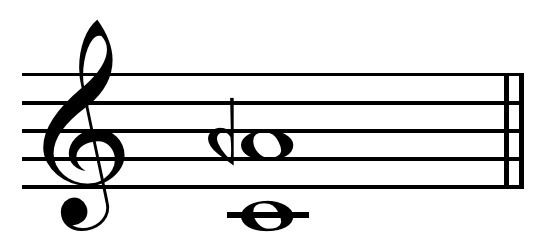Semitones ~8½ Just interval 18:11 or 13:8 | Abbreviation n6 Interval class ~3½ Equal temperament 800 or 900 | |
 | ||
A neutral sixth is a musical interval wider than a minor sixth play but narrower than a major sixth play . Three distinct intervals may be termed neutral sixths:
These intervals are all within about 12 cents of each other and are difficult for most people to distinguish. Neutral sixths are roughly a quarter tone sharp from 12 equal temperament minor sixths and a quarter tone flat from 12-ET major sixths. In just intonation, as well as in tunings such as 31-ET, 41-ET, or 72-ET, which more closely approximate just intonation, the intervals are closer together.
A neutral sixth can be formed by subtracting a neutral second from a minor seventh. Based on its positioning in the harmonic series, the undecimal neutral sixth implies a root one minor seventh above the higher of the two notes.
Thirteenth harmonic
13:8 (840.53 cents), the ratio of the thirteenth harmonic is notated in Ben Johnston's system as A13♭.
This note is often corrected to a just or pythagorean ratio on the natural horn, but the pure thirteenth harmonic was used in pieces including Britten's Serenade for tenor, horn and strings.
